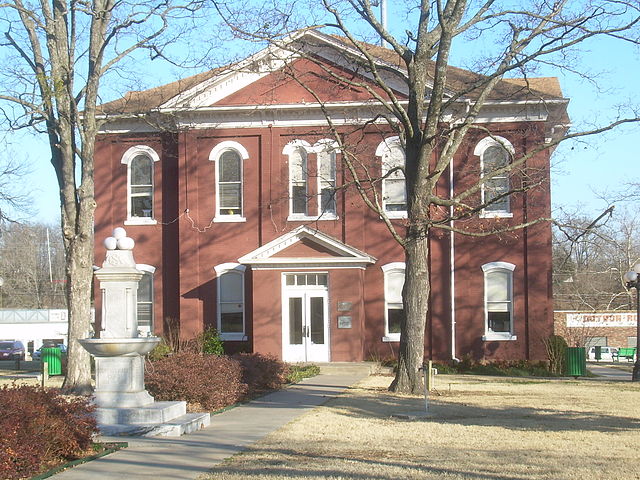The term Five Civilized Tribes was applied by the United States government in the early federal period of the history of the United States to the five major Native American nations in the Southeast: the Cherokee, Chickasaw, Choctaw, Muscogee (Creek), and Seminoles. White Americans classified them as "civilized" because they had adopted attributes of the Anglo-American culture.
The Mississippian culture was a mound-building Native American urban culture, which flourished in the South and Eastern regions of the United States prior to the arrival of white settlers.
Cherokee Nation Historic Courthouse in Tahlequah, Oklahoma, built in 1849, the oldest public building in present-day Oklahoma
The Cherokee people are one of the Indigenous peoples of the Southeastern Woodlands of the United States. Prior to the 18th century, they were concentrated in their homelands, in towns along river valleys of what is now southwestern North Carolina, southeastern Tennessee, southwestern Virginia, edges of western South Carolina, northern Georgia and northeastern Alabama consisting of around 40,000 square miles
Sequoyah, creator of the Cherokee syllabary as painted by Henry Inman circa 1830
Great Smoky Mountains
After the Anglo-Cherokee War, bitterness remained between the two groups. In 1765, Henry Timberlake took three Cherokee chiefs to London meet the Crown and help strengthen the newly declared peace.
Portrait of Major Ridge in 1834, from History of the Indian Tribes of North America.






